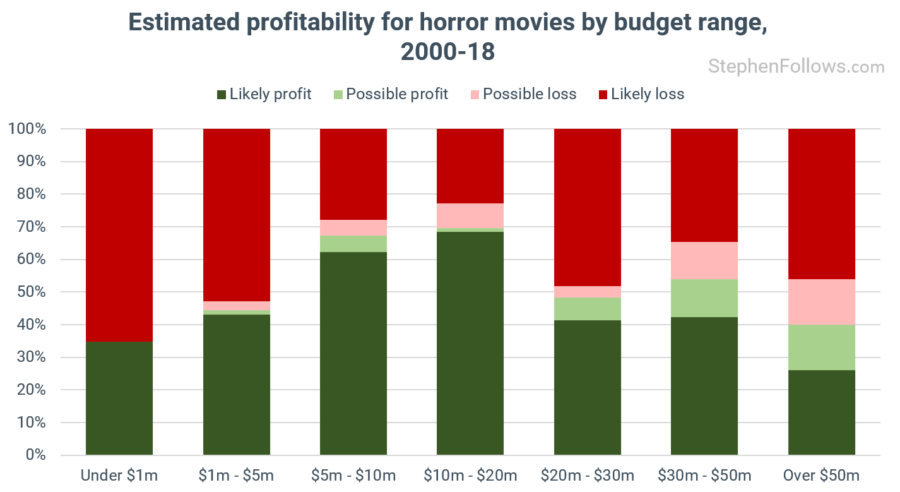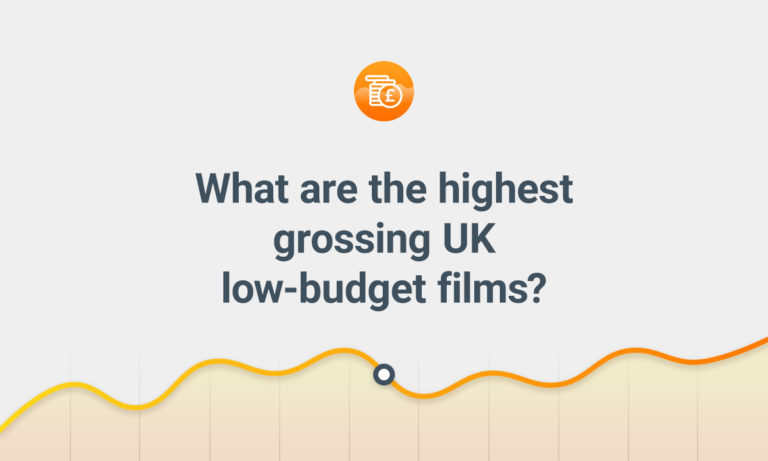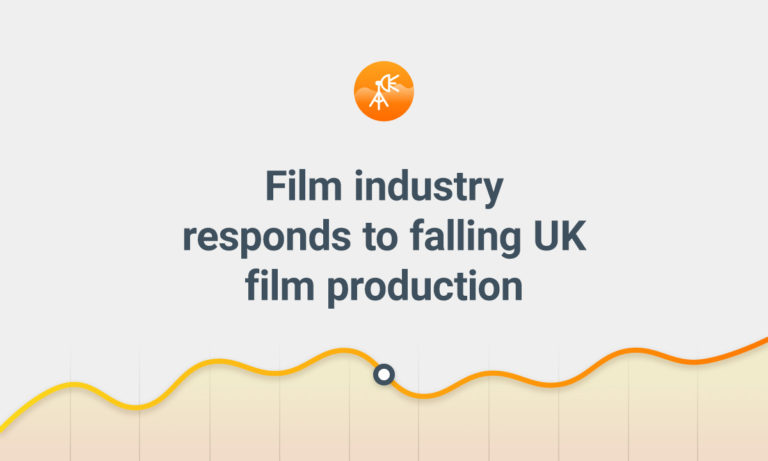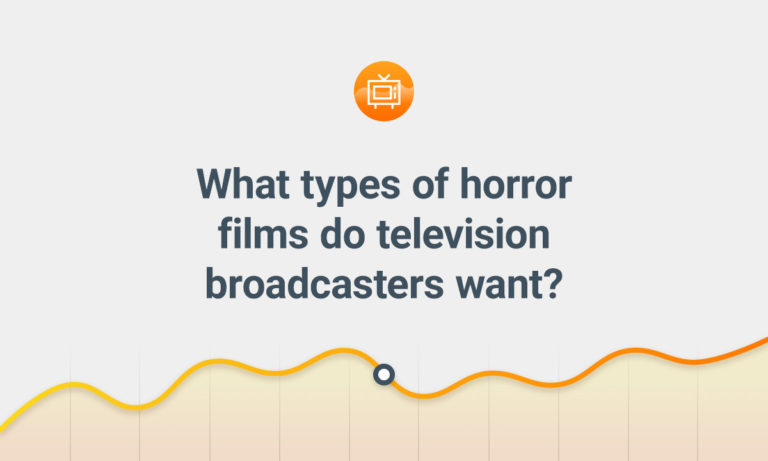Regular readers will know that I’ve conducted a number of research projects into horror films over the years.
Despite not being much of a watcher of horror movies, the business side fascinates me. The genre seems to break many of the rules of thumb which apply to other genres and deserves its own economic study.
For example, The Black Phone is currently doing great business in theatres, on a modest $18 million budget. I was asked on Twitter if this is another illustration of the idea that “the less you spend, the more you make” with horror movies.
I went back to my past (pre-pandemic) data to see what we can learn from my existing calculations.
Profit prophets
In a previous project, I studied all movies reaching US cinemas between 2000 and 2018 and built a model for how likely each project was to have achieved profitability (i.e. money back to producers after all costs and all income along the whole value chain, assuming standard terms).
By splitting the films into one of seven budget categories, we can see how the estimated profitability shifts.
As the chart below reveals, there seems to be a sweet spot between around $5 million and $20 million, in which profitability is at its highest. At that range, two-thirds are likely to have been profitable for their producers.

This is just looking at profit/loss in a binary sense. On top of this, we need to consider the likelihood of mega profits. The Black Phone has already grossed over seven times its budget at the global box office (for scale, twice its budget has historically been an extremely rough marker of profitability).
The economics of a micro-budget (i.e. under $1 million) and big-budget (i.e. over $50m) horror films are vastly different – almost to the point of being different sub-industries. The former is more likely to lose everything, but also more likely to make spectacular returns, as a percentage of the initial investment. Big budget movies are safer on the low end but have their ‘best case scenario’ capped at more moddest levels.
Perhaps the mid-range horror movie have it best, in that they are likely to receive some income, even if underperforming, but also carry the promise of a high percentage return.
Further reading
If you would like to explore some of the ideas mentioned above, I have included a few of my past studies below:
- How profitable are horror movies?
- What percentage of independent films are profitable?
- What the data says about producing low-budget horror films
- Six things every filmmaker should know about the horror genre
- Is Jason Blum right that there is a shortage of female horror directors?
- The handful of tropes used by most horror movie posters
- What types of horror films do television broadcasters want?
Notes
Today’s research related to all horror films with a Domestic theatrical release between 2000 and 2018, for which budget data was available. This include both indie movies and Studio productions. You can read more about my methodology for this research here.
It relates to a pre-pandemic business model and it’s currently unclear which things will stay true and which will change. So while this is interesting and food for thought, I don’t regard it as the final word on the topic by any means.





Comments
I imagine this kind of trend is typical with a lot of movies, though with different scales. Two small, no one hears about it and so no one goes to see it. Too big, and it’s asking too much of its target market. In the middle, it gets enough traction but can still get its money back.
Though that said, I expect the smaller portion of micro-budget films that are profitable can often be the ones that have the best margins. Though they are obvious exceptions, films like Paranormal Activity and Blair Witch Project probably singlehandedly make up a significant portion of the revenues for films in their category.